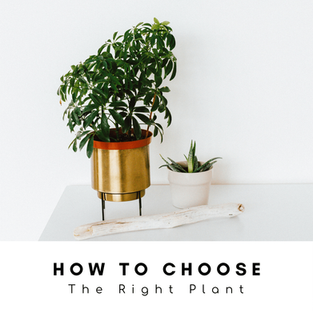There are a surprising number of ways that you can grow indoor plants outside of a traditional pot. One of the most innovative ways to grow plants is directly in water – you don’t have to work with messy soil and the hassle that comes with it. The following guide will teach you how to grow indoor houseplants in water instead of soil.
Step by Step Guide to Growing Plants in Water
You may be wondering why or how growing a plant in water might work at all. The surprising fact behind this unique method is that certain plants are completely capable of pulling the oxygen they need from the water.
Growing indoor plants in the water will take a bit of preparation and work, but it is well worth it for the uniqueness and overall cleanliness that growing plants in water without soil can bring.
Step One: Find the right container
The first thing that you need to do is find the right container or water vessel for growing your plant. Ideally, your container should be durable and sturdy. This will reduce the chances that the container will break or fall over at any point.
Most people choose clear containers so that they can check on the health of the roots without having to lift the plant out of the water; in addition to this, clear containers are more aesthetically interesting and add a unique touch to any space.
It would be best to avoid containers made from metal, due to the fact that the surface of these containers can corrode from water exposure, which will damage your plant.
Step Two: Add the right kind of water
Once you have your container picked out, it is time to add water. If you can, purchase spring water instead of using water straight from your sink’s tap. Spring water is more likely to be fortified with minerals and nutrients, which will give your water-growing plants a much needed nutritional boost.
Step Three: Add fertilizer
Even though you aren't growing a plant in soil, you will still need fertilizer. Look for a fertilizer that is water-based or at least water-soluble; do not put "regular" fertilizer in water as this will damage your plant.
It's important to only use a small amount of fertilizer, as it's much easier to damage plants growing in water with fertilizer than it is to damage plants growing in the soil – roots on plants grown in water have a much easier time accessing nutrients.
Step Four: Add charcoal
After adding the fertilizer to your container, you can add a pinch of powdered charcoal. The charcoal will help the water in your container say clean and clear, which will keep your plant healthy and allow you to check in on your plant by simply looking through the container.
And that’s it – you’re ready to start growing. Remember, you need to keep a close eye on your water-grown plants, especially if you are growing something that needs more care than other types of plants.
Best Plants for Growing in Water
There are many plants that can be grown in the water. Take a look at the list above and find a plant that suits your needs and aesthetic preferences. Remember to keep the container size into consideration, as you don't want a plant getting shoved into a too-small container.
Spider Plant
Spider plants are iconic due to their long leaves that resemble a spider's legs. The spider plant is a hardy houseplant that can do well in soil or water. Note that you will have to change the water of a spider plant every week, and you'll need to use fertilizer to add nutrients to the water.
Peace Lily
Peace Lilies are popular for their subtle, relaxing fragrance and their signature white flowers. They can be grown either in the soil or the water. In addition to looking nice, Peace Lilies are great at purifying the air in your home, which will keep your air cleaner and safer for those living in your home.
Pothos
Pothos is often the first water-growing plant that people try due to its durability, the ease with which it can grow in the water, and it's relatively low-maintenance style. This plant can do well in many different lighting conditions, temperatures, and even humidity levels.
Phalaenopsis Orchid
Phalaenopsis Orchids are stunning flowering plants with colorful flowers that will spruce up any living space. Phalaenopsis Orchids will need some special care if you want them to grow in water. You need to make sure you support the roots with some pebbles, choose a water vessel with a curved edge to discourage the plant from flopping sideways and keep an eye out for discoloration.
Read More
.png)
.png)






